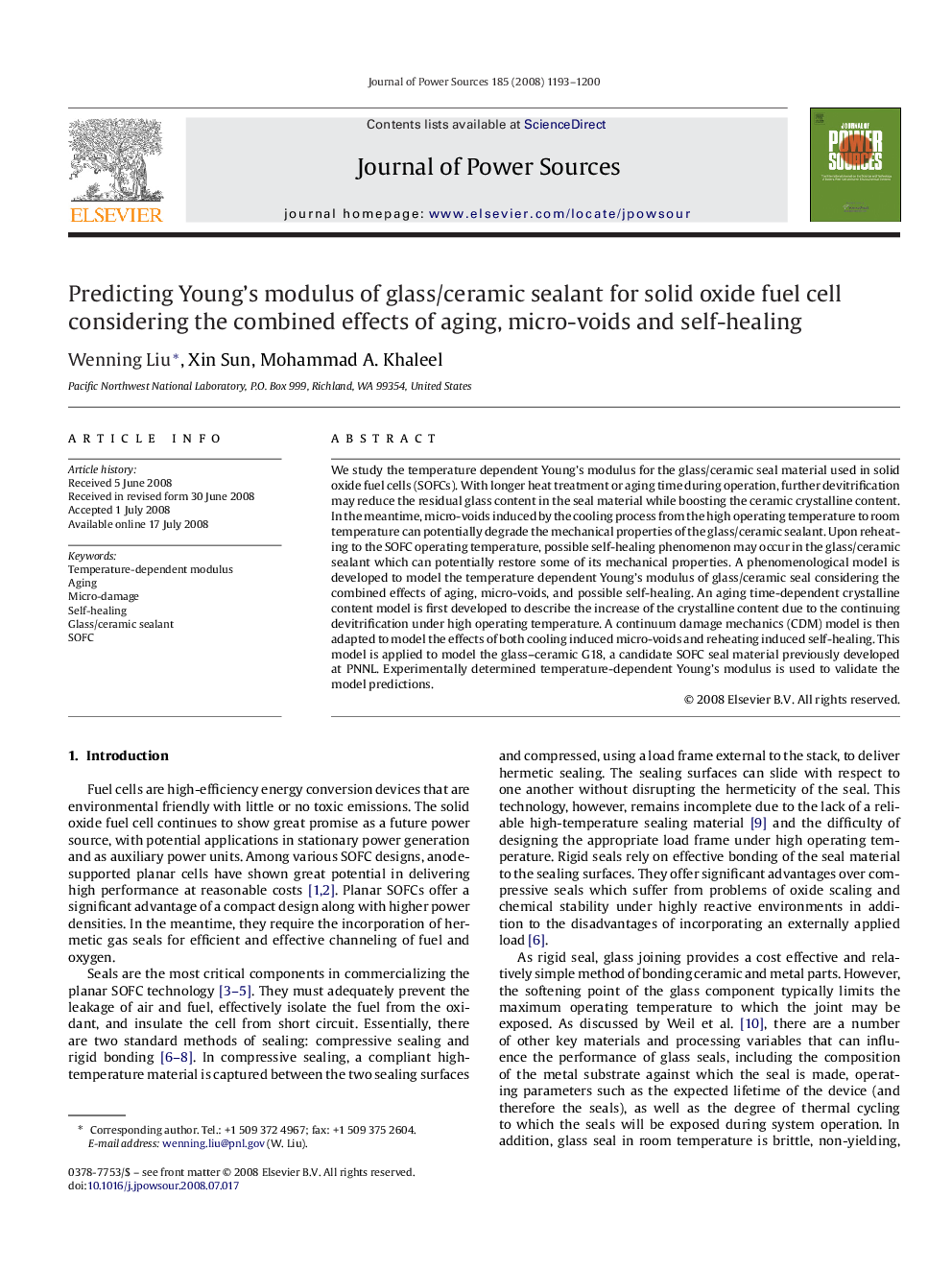| Article ID | Journal | Published Year | Pages | File Type |
|---|---|---|---|---|
| 1290241 | Journal of Power Sources | 2008 | 8 Pages |
We study the temperature dependent Young's modulus for the glass/ceramic seal material used in solid oxide fuel cells (SOFCs). With longer heat treatment or aging time during operation, further devitrification may reduce the residual glass content in the seal material while boosting the ceramic crystalline content. In the meantime, micro-voids induced by the cooling process from the high operating temperature to room temperature can potentially degrade the mechanical properties of the glass/ceramic sealant. Upon reheating to the SOFC operating temperature, possible self-healing phenomenon may occur in the glass/ceramic sealant which can potentially restore some of its mechanical properties. A phenomenological model is developed to model the temperature dependent Young's modulus of glass/ceramic seal considering the combined effects of aging, micro-voids, and possible self-healing. An aging time-dependent crystalline content model is first developed to describe the increase of the crystalline content due to the continuing devitrification under high operating temperature. A continuum damage mechanics (CDM) model is then adapted to model the effects of both cooling induced micro-voids and reheating induced self-healing. This model is applied to model the glass–ceramic G18, a candidate SOFC seal material previously developed at PNNL. Experimentally determined temperature-dependent Young's modulus is used to validate the model predictions.
